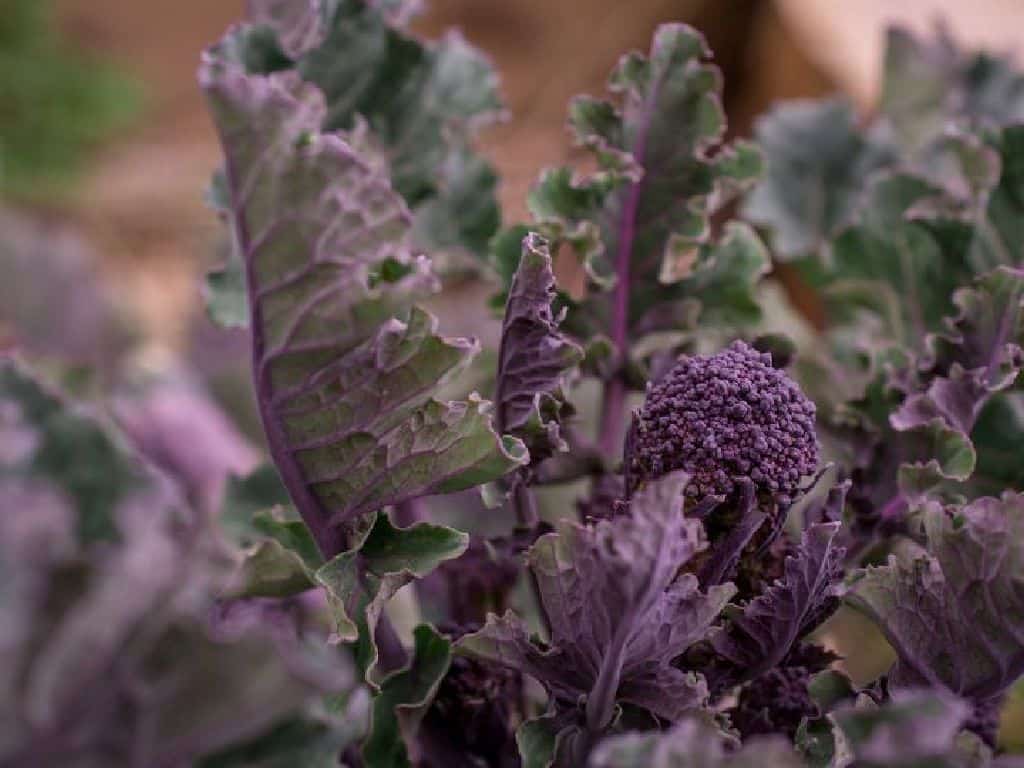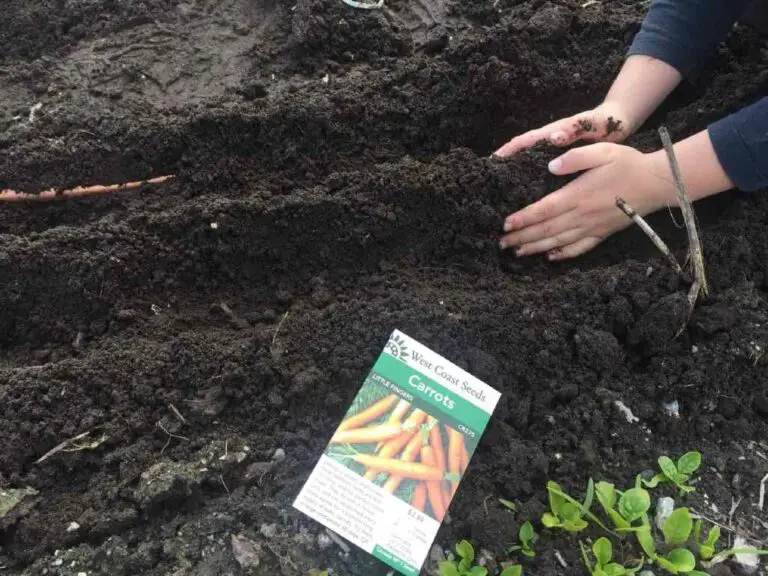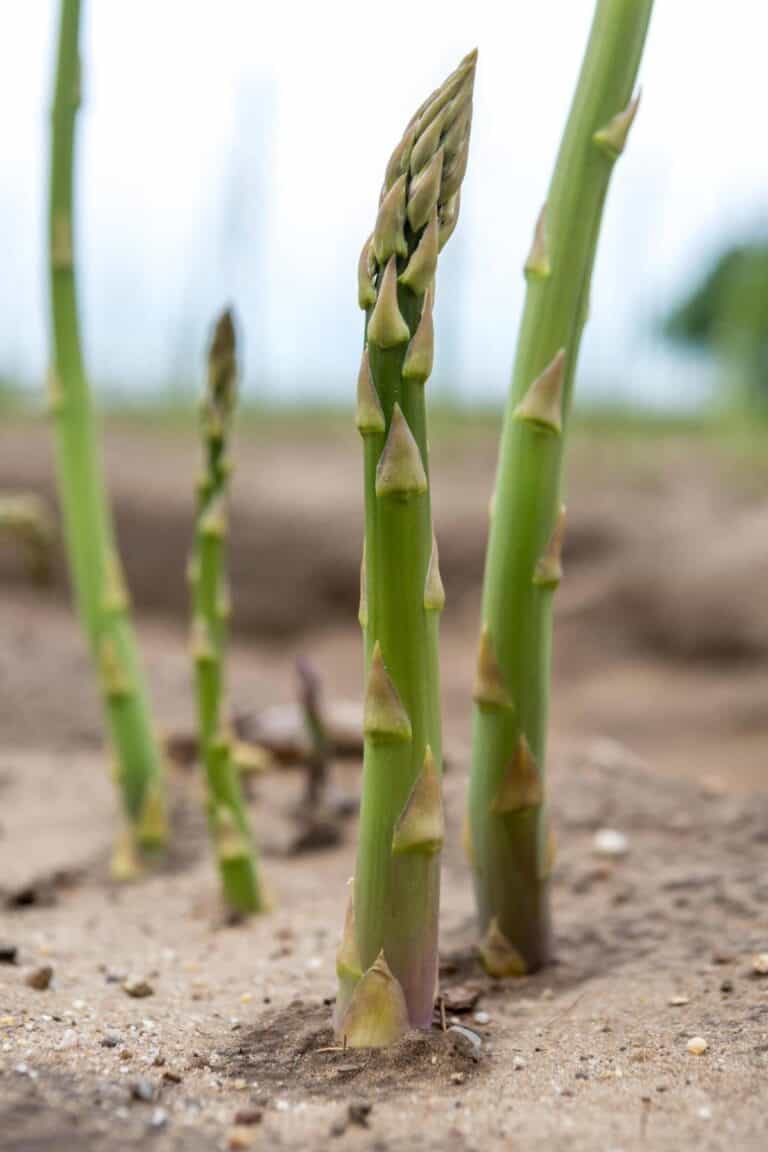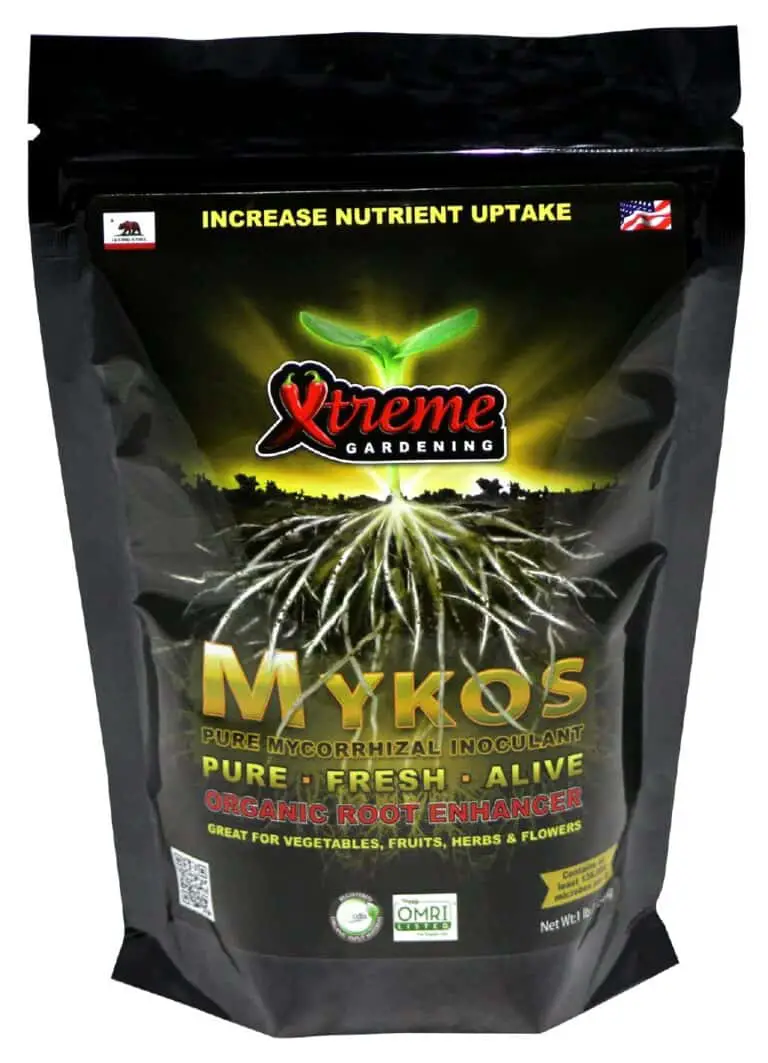Why Are My Broccoli Leaves Turning Purple? Broccoli Discoloration

Are you puzzled by the sight of purple leaves on your beloved broccoli plants? Don’t worry; you’re not alone. Broccoli is known for its vibrant green color, but when those lush leaves start turning an unexpected shade of purple, it can leave you scratching your head. What could be causing this mysterious discoloration? Fear not, dear reader, for we are here to shed light on the matter.
In this article, we will unravel the factors behind broccoli discoloration and delve into the intriguing world of purple broccoli leaves. We’ll explore the possible culprits lurking behind this unusual phenomenon and equip you with the knowledge to prevent it from happening again in the future.
So, if you’re ready to embark on a journey through the colorful realm of broccoli, let’s unravel the mystery together and discover why your broccoli leaves might be turning purple. Get ready to unearth the secrets behind this enigmatic transformation and reclaim the verdant beauty of your broccoli patch.
Why Are My Broccoli Leaves Turning Purple?
Broccoli, with its vibrant green color, is a staple vegetable known for its nutritional value and versatility in cooking. However, there are instances when broccoli leaves take on an unexpected hue, such as purple, leaving growers and consumers perplexed.
One common reason for purple leaves in broccoli plants is a pigment called anthocyanin. Anthocyanin is a natural pigment found in many plants, responsible for the purple, red, or blue hues observed in leaves, fruits, and flowers. When environmental conditions such as cooler temperatures or exposure to sunlight stress the plant, it triggers the production of anthocyanin, leading to purple discoloration in the leaves.
Another factor contributing to purple leaves in broccoli plants is nutrient deficiency, specifically phosphorus. Insufficient phosphorus levels in the soil can hinder the plant’s ability to metabolize sugars and other compounds effectively. As a result, the plant produces excess sugars that accumulate in the leaves, triggering the formation of anthocyanin and causing the purple coloration.
While purple leaves may not pose a significant threat to the health of your broccoli plants, it’s essential to monitor them for any signs of nutrient deficiencies or other issues. If you suspect a nutrient imbalance, you can amend the soil with organic matter or balanced fertilizers to ensure adequate nutrient availability.
Additionally, providing consistent care, including proper watering, sufficient sunlight, and maintaining optimal soil conditions, can help promote healthy leaf growth and minimize purple discoloration.
Understanding the Role of Genetics in Broccoli Leaf Color
Numerous genetic factors have an impact on the coloration of broccoli leaves. Different varieties of broccoli possess genetic traits that determine the pigments responsible for leaf color. Chlorophyll, the primary pigment, gives leaves their green color by capturing sunlight for photosynthesis. However, genetic variations can lead to the production of other pigments, such as anthocyanins, which impart purple hues to the leaves.
In broccoli leaves, genes control the complex processes of pigment synthesis and accumulation. Genetic variations can affect the enzymes involved in pigment production, leading to variations in leaf color. These genetic factors contribute significantly to the occurrence of purple leaves in broccoli plants.
Environmental Factors Contributing to Purple Broccoli Leaves
Apart from genetics, environmental factors play a crucial role in broccoli leaf coloration. Temperature stress is one such factor that can influence leaf color. Extreme heat or cold can disrupt the synthesis of pigments, causing shifts in leaf color. For example, exposure to low temperatures can trigger anthocyanin production, resulting in purple or reddish leaves.
Sunlight exposure also affects the pigmentation of broccoli leaves. Insufficient sunlight can reduce chlorophyll production, leading to paler leaves. On the other hand, excessive sunlight can intensify anthocyanin pigmentation, causing leaves to turn purple.
Soil conditions and nutrient deficiencies can impact leaf color as well. Inadequate nutrient availability, particularly nitrogen deficiency, can result in reduced chlorophyll production and contribute to leaf discoloration. Imbalances in phosphorus and potassium levels can also affect pigmentation, leading to changes in leaf color.
Read: Can Broccoli Grow in Winter? How Long Does It Take to Grow in Winter?
Nutrient Deficiencies and Excesses Causing Broccoli Leaf Discoloration
Nutrient deficiencies and excesses can significantly impact the coloration of broccoli leaves. Nitrogen deficiency, a common issue in plants, can result in pale or yellowish leaves. Nitrogen is vital for chlorophyll synthesis, and its scarcity can hinder the production of this green pigment.
Phosphorus and potassium imbalances can also contribute to leaf color changes. A deficiency of phosphorus can cause leaves to turn bluish-green or purple, while excessive phosphorus can lead to dark green or bronze-colored leaves. Similarly, potassium deficiencies can cause the yellowing or browning of leaf margins.
Micronutrient deficiencies, such as iron, manganese, or magnesium, can manifest as leaf discoloration. Iron deficiency often leads to yellowing between leaf veins, known as interveinal chlorosis. Manganese deficiency can cause light green or yellowish leaves, while magnesium deficiency results in yellowing between leaf veins and overall leaf discoloration.
Pests and Diseases Associated with Purple Broccoli Leaves
Purple broccoli leaves can also be indicative of pest infestations or diseases. Insect pests, such as aphids or caterpillars, can damage the foliage, leading to discoloration. These pests feed on the leaves, disrupting the natural pigmentation and causing visual changes.
Fungal infections can also contribute to leaf discoloration in broccoli plants. Fungi like Alternaria and Fusarium can cause leaf spots or patches, resulting in discoloration. These infections often accompany damp or humid conditions, creating an ideal environment for fungal growth.
Bacterial diseases can also impact the color of broccoli leaves. Xanthomonas campestris, which causes bacterial leaf spot, can result in dark, water-soaked lesions on the foliage, discoloring it and affecting the plant’s general health.
Chemical Factors Affecting Broccoli Leaf Color
Chemicals play a significant role in broccoli leaf coloration. Herbicide and pesticide applications can influence leaf pigmentation. Improper use or excessive amounts of these chemicals can cause stress to the plant, resulting in discoloration. It is crucial to follow the recommended application rates and timing to minimize the impact on leaf color.
Within the plant, chemical reactions take place that contribute to color changes. For example, the presence of anthocyanin pigments can cause leaves to turn purple. These pigments are produced through complex chemical processes and are responsible for the purple hues observed in some broccoli varieties.
Pollutants in the environment can also affect leaf pigmentation. Air pollutants, such as sulfur dioxide and ozone, can interact with plant tissues and disrupt pigmentation, leading to changes in leaf color.
Diagnosing and Treating Purple Broccoli Leaves

Diagnosing the underlying cause of purple broccoli leaves is key to implementing appropriate treatments. Visual symptoms, such as leaf color changes, can provide clues about potential issues. Examine the plants carefully for signs of nutrient deficiencies, pests, diseases, or chemical stress.
Testing soil and plant tissue can provide valuable insights into nutrient deficiencies. Soil tests analyze nutrient levels, pH, and other factors affecting plant health. Plant tissue analysis can pinpoint specific nutrient imbalances or deficiencies.
Based on the diagnosis, appropriate treatments and interventions can be implemented. This may include adjusting fertilization practices, applying targeted nutrient amendments, addressing pest or disease issues, or modifying chemical applications. Regular monitoring and follow-up assessments are important to track progress and make necessary adjustments.
The Role of Genetic Modification in Controlling Broccoli Leaf Color
Genetic engineering offers potential solutions for controlling broccoli leaf color. Researchers have explored genetic modification approaches to alter leaf pigmentation and create varieties with desired colors. By introducing or suppressing specific genes involved in pigmentation pathways, scientists can potentially develop broccoli plants with consistent and controlled leaf color.
However, genetic modification of crops raises important considerations. It is crucial to thoroughly evaluate the safety, environmental impact, and consumer acceptance of genetically modified broccoli varieties. Assessing potential risks and benefits, ensuring regulatory oversight, and promoting transparency are crucial in shaping the future of genetically modified crops.
Factors Contributing to Broccoli Discoloration (Summary)
- Age and Storage: One of the primary factors behind broccoli discoloration is its age and storage conditions. As broccoli ages, it becomes more susceptible to discoloration. Improper storage, such as exposure to excessive heat or cold, can accelerate the discoloration process. To maintain the freshness and vibrant color of broccoli, it is crucial to store it properly. Refrigeration at temperatures between 32°F and 40°F (0°C and 4°C) is recommended.
- Oxidation: Broccoli discoloration can also be attributed to oxidation, a chemical process that occurs when the vegetable comes into contact with air. When the protective layer on the surface of broccoli is damaged, the oxygen in the air reacts with the enzymes present in the vegetable, causing discoloration. To minimize oxidation, it is advisable to store broccoli in airtight containers or plastic bags and consume it as soon as possible after cutting.
- Exposure to Light: Another factor that can contribute to broccoli discoloration is exposure to light. When broccoli is exposed to direct sunlight or bright artificial light for extended periods, it can lead to color changes. To prevent discoloration caused by light exposure, it is recommended to store broccoli in a cool, dark place.
- Overcooking: Overcooking broccoli can cause it to lose its vibrant green color and become discolored. To preserve the natural color and nutrients, it is important to cook broccoli for the appropriate duration. Steaming or blanching broccoli for a short period of time and then immediately plunging it into ice water can help retain its color and prevent discoloration.
- Insects and Diseases: In some cases, discoloration of broccoli can be attributed to the presence of insects or diseases. Pests, such as aphids or cabbage worms, can damage the surface of the vegetable, leading to discoloration. Similarly, fungal or bacterial infections can cause spots or patches on the broccoli. To prevent these issues, it is important to inspect broccoli carefully before purchasing and ensure proper pest control measures are in place during cultivation.
Conclusion
Understanding the factors behind broccoli discoloration is crucial for both growers and consumers. Genetic factors, environmental conditions, nutrient imbalances, and pest or disease infestations can all contribute to the occurrence of purple leaves in broccoli plants. By being aware of these factors, growers can implement preventive measures, such as maintaining optimal growing conditions, addressing nutrient deficiencies, and practicing proper pest and disease management.
For consumers, knowing the causes of broccoli discoloration can guide their selection of fresh and vibrant produce. When choosing broccoli, look for healthy green leaves and avoid those with significant discoloration or signs of pests or diseases.
In conclusion, while purple broccoli leaves may seem unusual, they serve as indicators of underlying factors affecting the plant’s health. By recognizing and addressing these factors, we can ensure the growth of healthy, visually appealing broccoli with its characteristic green hue, providing us with nutritious and delicious additions to our meals.
FAQs
Are purple broccoli leaves safe to eat?
Purple broccoli leaves are safe to eat. The color change is primarily due to the presence of natural pigments called anthocyanins, which are not harmful. However, it’s important to address the underlying causes of discoloration to maintain the overall health and vitality of the plants.
Can I still harvest broccoli with purple leaves?
Yes, you can still harvest broccoli with purple leaves. While the leaves may have changed color, the broccoli florets can still be harvested and consumed. Ensure the florets are firm and have developed fully before harvesting.
What nutrient deficiencies cause purple discoloration in broccoli leaves?
Nitrogen deficiency is a common nutrient deficiency that can cause purple discoloration in broccoli leaves. Other deficiencies, such as phosphorus and potassium imbalances, as well as micronutrient deficiencies like iron or magnesium, can also contribute to leaf discoloration.
How can I treat fungal infections causing purple leaves in broccoli?
To treat fungal infections causing purple leaves in broccoli, it is important to identify the specific fungal pathogen involved. Fungicides approved for use on vegetables can be applied according to the product instructions. It is also crucial to improve air circulation, avoid overhead irrigation, and maintain proper plant hygiene to prevent further spread of fungal infections.
Can environmental factors alone cause purple broccoli leaves?
Environmental factors alone, such as temperature stress, sunlight exposure, and soil conditions, can contribute to purple broccoli leaves. Extreme temperatures, inadequate sunlight, and nutrient deficiencies can disrupt leaf pigmentation and result in discoloration.
Are purple broccoli leaves an indication of a serious problem?
Purple broccoli leaves are not necessarily an indication of a serious problem. While they can be visually concerning, they are often a response to various factors, including genetics, environment, and nutrient imbalances. Addressing these underlying causes can help restore the health and appearance of the plants.
Can purple broccoli leaves affect the taste of the broccoli florets?
Purple broccoli leaves do not typically affect the taste of the broccoli florets. The color change is primarily cosmetic and does not significantly alter the flavor or nutritional value of the harvested florets.
Are there any organic solutions to prevent or treat purple broccoli leaves?
Organic solutions to prevent or treat purple broccoli leaves include using organic fertilizers to maintain balanced nutrient levels, employing organic pest control methods to manage insect infestations, and promoting overall plant health through organic practices like composting and crop rotation.
What are the other visual signs I should look for to identify the cause of purple leaves in broccoli?
When identifying the cause of purple leaves in broccoli, look for other visual signs such as wilting, leaf spots, holes, or discoloration patterns. This can help determine if the cause is related to nutrient deficiencies, pests, diseases, or environmental factors. Conducting soil and plant tissue tests can provide further insights into nutrient imbalances and deficiencies.






